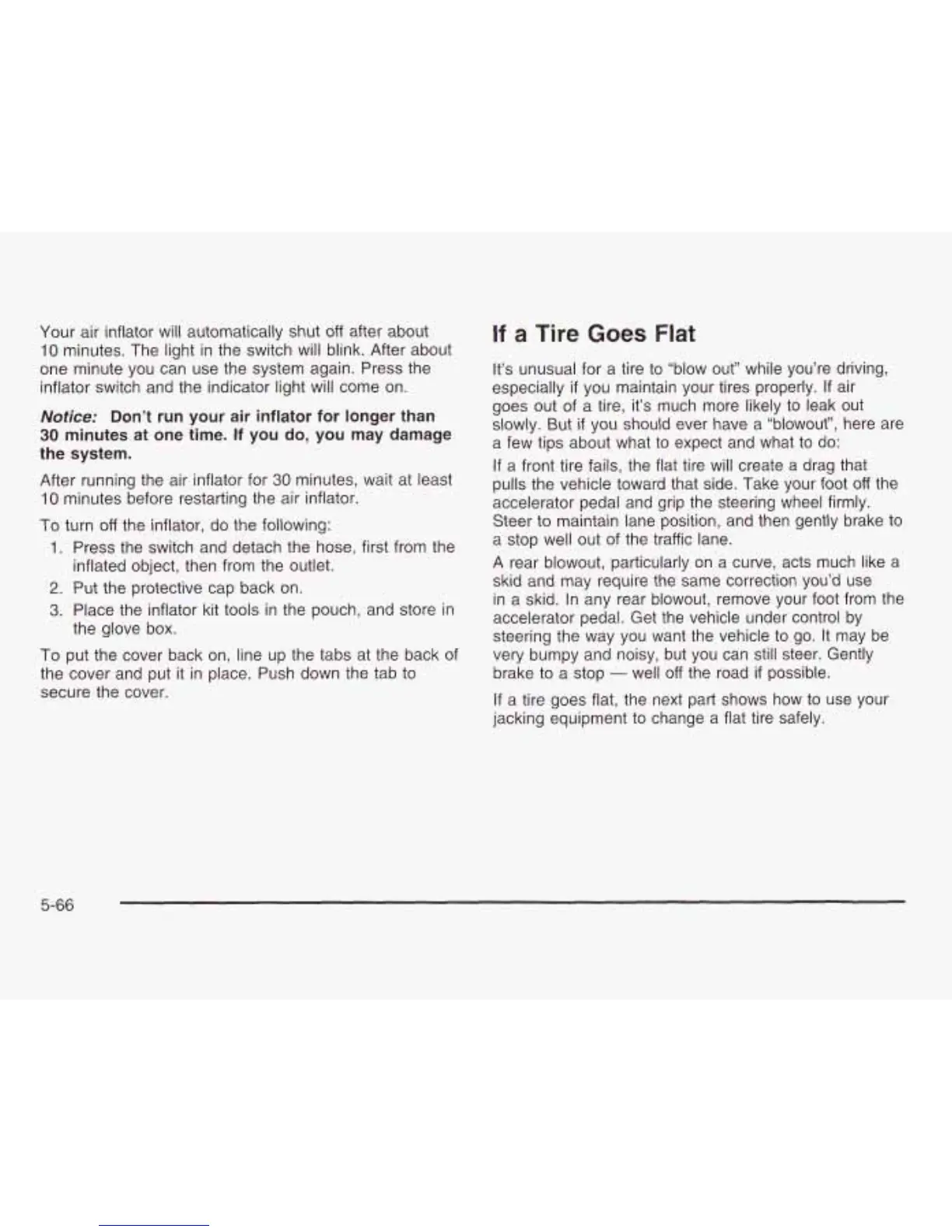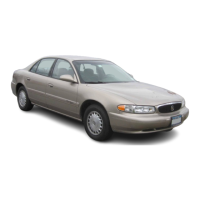Your air inflator will automatically shut
off
after about
10
minutes. The light in the switch will blink. After about
one minute you can use the system again. Press the
inflator switch and the indicator light will come on.
Notice:
Don’t run your air inflator for longer than
30
minutes at one time.
If
you do, you may damage
the system.
After running the air inflator for
30
minutes, wait at least
10
minutes before restarting the air inflator.
To turn
off
the inflator, do the following:
inflated object, then from the outlet.
1.
Press the switch and detach the hose, first from the
2.
Put the protective cap back on.
3.
Place the inflator kit tools in the pouch, and store in
To
put the cover back on, line up the tabs at the back of
the cover and put it in place. Push down the tab
to
secure the cover.
the glove box.
If
a
Tire
Goes
Flat
It’s unusual for a tire
to
“blow out” while you’re driving,
especially
if
you maintain your tires properly.
If
air
goes out of a tire, it’s much more likely to leak out
slowly. But
if
you should ever have a “blowout”, here are
a few tips about what to expect and what to do:
If a front tire fails, the flat tire will create a drag that
pulls the vehicle toward that side. Take your foot off the
accelerator pedal and grip the steering wheel firmly.
Steer to maintain lane position, and then gently brake
to
a
stop
well out of the traffic lane.
A
rear blowout, particularly on a curve, acts much like a
skid and may require the same correction you’d use
in a skid. In any rear blowout, remove your foot from the
accelerator pedal. Get the vehicle under control by
steering the way you want the vehicle
to
go.
It
may be
very bumpy and noisy, but you can still steer. Gently
brake
to
a stop
-
well
off
the road
if
possible.
If a tire goes flat, the next part shows how to use your
jacking equipment to change a flat tire safely.
5-66

